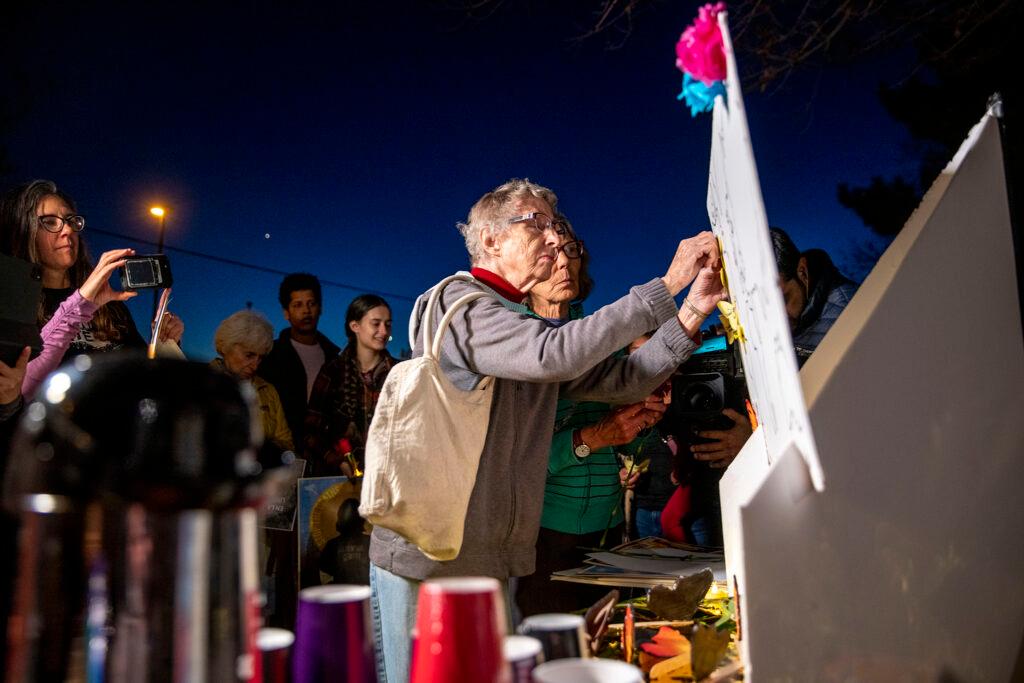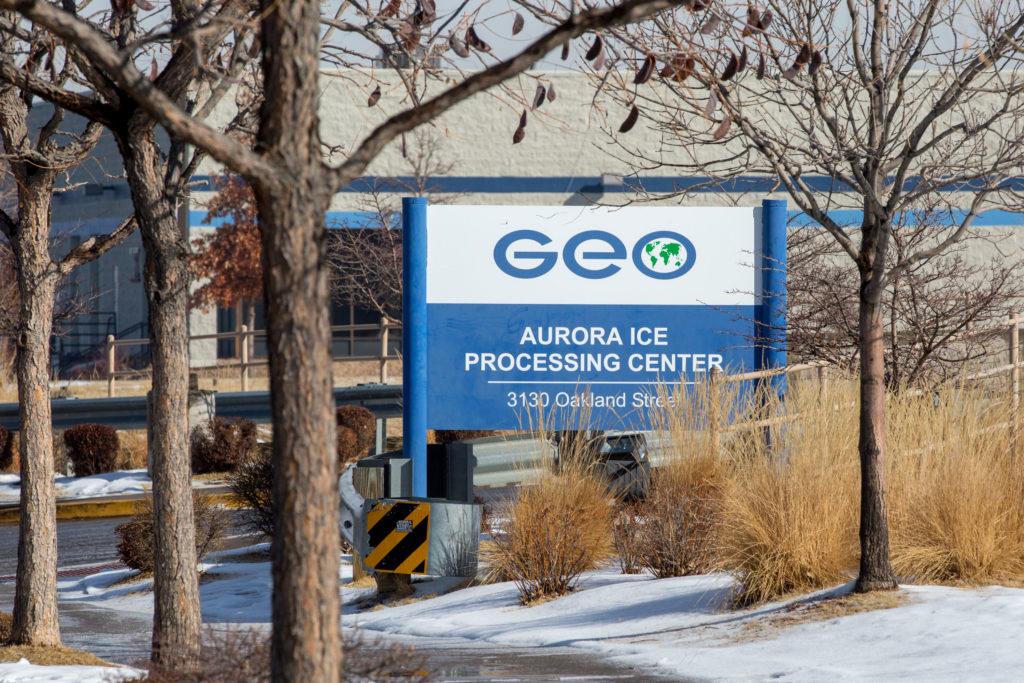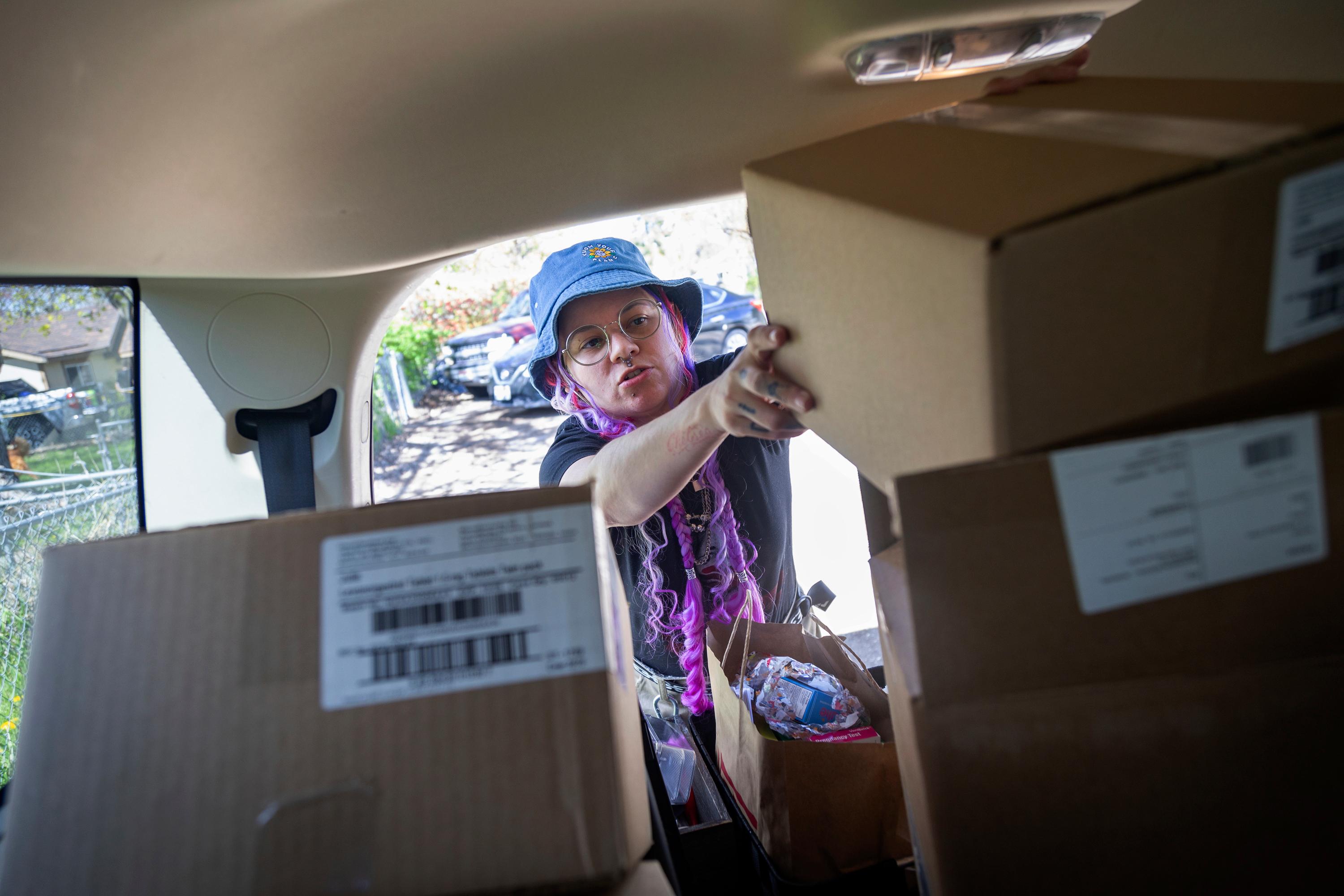
Melvin Ariel Calero Mendoza injured his right big toe while playing soccer inside the Immigration and Customs Enforcement detention center in Aurora last summer. Afterward, the 39-year-old’s foot and leg slowly swelled for more than a month until he collapsed in a kitchen.
He died shortly thereafter.
Now, a newly-released autopsy from the Office of the Coroner for Adams and Broomfield counties gives more detail into what happened. Medical experts, along with family members, say the report shows that Calero Mendoza’s death was potentially preventable and follows a pattern of deaths at ICE facilities.
“My family wants to know how the signs of a blood clot were ignored by medical professionals within the detention facility despite his leg worsening and his visits to the medical clinic,” said Adilia Calero Mendoza, Melvin’s sister, in a written statement provided by her lawyers.
The 9-page autopsy, which CPR obtained through a public records request, reiterates past accounts from ICE of what led to Calero Mendoza’s death. It confirms that Calero-Mendoza suffered a pulmonary embolism, where one or more clots block blood flow to the lungs, and that it was “likely connected” to a series of injuries to his right foot.
The review also contains inconsistencies with an earlier ICE death report. The differences, mainly around the dates of his medical appointments, raise questions about potential neglect and quality of care in the privately-run Aurora detention center, family and medical experts say.
“We are devastated,” said Adilia Calero Mendoza. “Early detection and prompt and adequate medical care could have saved my brother, an otherwise healthy and active father of two.”
Calero Mendoza’s death in October was the Aurora facility's third since 2012. The most recent death was in 2017. U.S. Border Patrol arrested Calero Mendoza after “illegally entering” the country in April 2022.

His death spawned protests from immigrant advocates and inquiries from Colorado’s congressional delegation.
Representatives from ICE and GEO Group, the company contracted by the federal government to run the detention center, declined to comment on the findings of Calero Mendoza’s autopsy, citing an ongoing investigation. A GEO Group spokesperson said the company stands by its medical care for its inmates.
“We are fully committed to protecting the health and safety of our employees and all those in our custody and care,” the spokesperson said.
Details point to neglect, lawyers say
Calero Mendoza had traveled from his home in Nicaragua to claim asylum in the U.S. when he came into contact with U.S. Border Patrol agents, according to family members and advocates.
After he was arrested, ICE transferred Calero Mendoza to the GEO Group detention center in Aurora in May, where he awaited court proceedings. The exact start of his health problems remains unclear, due to inconsistencies between the autopsy and ICE’s initial death report released last fall.
According to the autopsy, Calero Mendoza injured his “right great toe” while playing soccer “on or around” Sept. 4. However, ICE’s initial death report stated his first injury occurred about a month earlier.
The discrepancy makes it hard to know exactly when he first sought help and what the response was like, said Elizabeth Jordan, director of the University of Denver’s Immigration Law and Policy Clinic and legal representation for Calero Mendoza’s sister.
“That’s too fuzzy,” Jordan said. “We really need to know exactly what happened.”
After his first visit, according to ICE’s death report, a nurse recorded that Calero Mendoza had slightly elevated blood pressure and prescribed him acetaminophen and ibuprofen — the basic ingredients in over-the-counter Tylenol and Advil, respectively.
Twelve days later, Calero Mendoza returned to the facility’s medical clinic with another injury to his leg and foot pain. A nurse gave him more ibuprofen.
On Sept. 29, he returned a third time with “severe pain and swelling to his right calf,” ICE’s death report says. A nurse gave him more ibuprofen and instructed him to elevate his right leg, apply ice over 24 hours and return to the medical clinic if his condition worsened.
About two weeks later, on Oct. 13, he collapsed in a common kitchen area of his dormitory, according to ICE’s review and the county coroner’s autopsy. Staff called 911 and he was transported to a nearby hospital, where he went into cardiac arrest.

The coroner’s autopsy report also confirmed the presence of lidocaine in Calero Mendoza’s blood and that a lack of mobility while in detention exacerbated his condition.
Legal representatives for Calero Mendoza’s family said the county autopsy showed signs that his death was preventable.
“The clot seemed to be in both of his lungs, which means that it's a pretty significant amount of clotting that was able to form,” Jordan said. “The takeaway is it’s something that should have been caught.”
Calero Mendoza’s family members have yet to file legal action against ICE or GEO Group. More evidence, such as medical reports and video surveillance recordings, are needed to fully understand what went wrong in the 39-year-old’s treatment, Jordan said.
“[ICE] has an obligation to the public to release those because we are all paying for them to be detaining people with our taxpayer dollars,” Jordan said. “And these conditions are letting people experience this kind of a medical emergency.”
One death in a larger pattern
Medical experts who reviewed Calero Mendoza’s autopsy said it illustrated a larger pattern of preventable deaths among young, relatively healthy ICE inmates.
One study of deaths in ICE detention between 2011 and 2018 found that the agency had violated their own medical care standards in the vast majority of cases. Of the reviewed cases, 55 of 71 occurred among a “relatively young” population experiencing treatable medical conditions. Out of those, only eight were due to suicide.
“A lot of times these deaths in younger inmates happen because early warning signs are missed,” said Dr. Parveen Parmar, an associate professor of clinical emergency medicine at the University of Southern California, who led the study.

More details are necessary to know if obvious warning signs were neglected, Parmar said. But oftentimes medical staff lacking the appropriate level of expertise are evaluating inmates with more serious conditions, she added.
“A lot of times it's not somebody who is a clinician,” she said. “It’s someone who is maybe a (licensed practical nurse) and not somebody who really is sort of primed to do these evaluations.”
Substandard medical care at ICE facilities has been an issue for years, Parmar and other experts said. Federal law doesn’t guarantee equal standards of care for non-citizens compared to citizens in U.S. correctional settings.
ICE’s process of transferring inmates between different detention centers across the country has also led to inconsistent record keeping, said Dr. Lauren Brinkley-Rubinstein, an associate professor of population health sciences at Duke University who studies health in prison settings.
“When you’re transferred from one facility to the next that’s oftentimes not directly run by the federal government, there’s no accountability,” she said. “It's really difficult to tell if they're meeting the standard of care as it is required.”
Investigation continues as family seeks more information
The federal inquiry into Calero Mendoza’s death is expected to wrap up this spring.
Advocates and lawmakers hope the investigation, which is being led by ICE’s Office of Professional Responsibility, will result in a clearer picture of the incident. Congressman Jason Crow and other Democratic lawmakers pushed for the independent inquiry shortly after Calero Mendoza’s death last fall.
Crow, through a spokesperson, declined to comment directly on the autopsy, citing the ongoing federal investigation.
“Our condolences remain with Mr. Calero Mendoza’s family as we continue to conduct regular oversight of this facility and push for more transparency,” said a spokesperson for Congressman Crow’s office.
With the help of a GoFundMe, the family recently repatriated Calero Mendoza’s body to Nicaragua for burial. His sister, who lives in the U.S., has also commissioned an independent autopsy.
“I want more answers,” said Adilia Calero Mendoza in her statement. “How could they have ignored pain in a swollen leg and clear signs of a blood clot for weeks, which the autopsy says ultimately killed him?”
Lawyers hope to get video of his collapse on Oct. 13 to better understand how quickly medical staff responded, as well as more detailed records of his medical visits about his foot injury that summer, said Jordan, the DU lawyer.
“We still have a lot of questions,” Jordan said. “This autopsy answers some questions, like exactly what the cause of death was. But in some ways begs many others.”
Read more of our coverage:
- Activists hold Día de los Muertos vigil outside Aurora ICE detention center to demand information on Nicaraguan inmate’s death
- Colorado lawmakers call for investigation into death at Aurora ICE facility
- Federal judge rules GEO Group — which runs an ICE detention center in Aurora — can’t be shielded from class-action lawsuit








